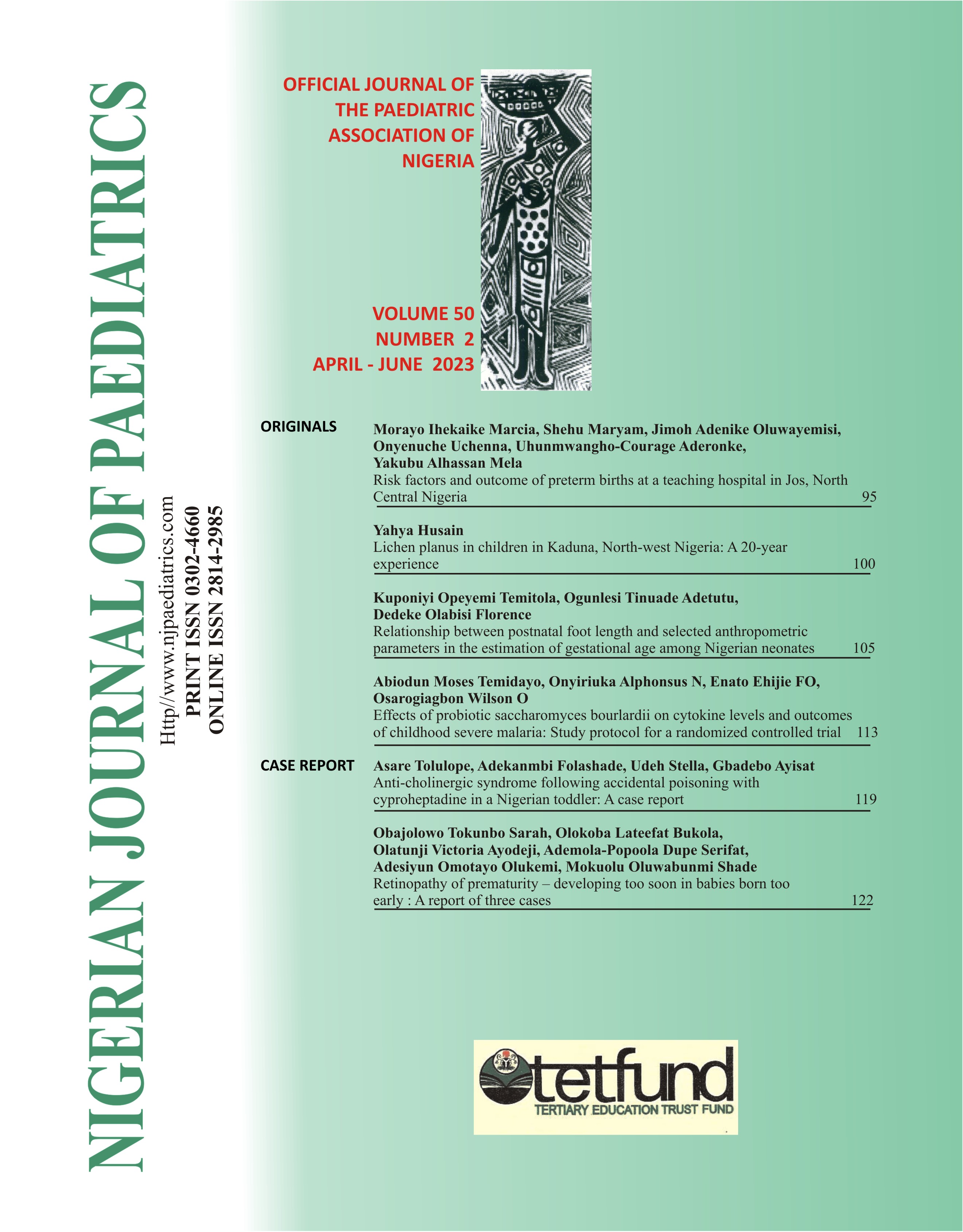Risk factors and outcome of preterm births at a teaching hospital in Jos, North Central Nigeria
Abstract
Abstract: Background/Aim: Preterm birth is a major pregnancy complication that imposes tremendous long-term medical and financial burdens on affected children, families, and the healthcare system. The aim of this study was to
find out the prevalence, risk factors, and outcome of preterm babies admitted to Bingham University Teaching Hospital's inborn Special Care Baby Unit.
Methods: It was a retrospective study of the medical records of all preterm babies delivered in the hospital from January 2021 to June 2022.
Results: A total of 1,160 live births occurred in the hospital during the study period out of which 196 (16.9%) were admitted. Of these, 100 (51.0%) were preterm's with gestational ages ranging from 24 to 36 weeks with a mean gestational age of 31.24 weeks (±2.78).Birth weight ranged from 650g to 2450g CC –BY 4.0 with a mean of 1530.22g (±414.11). There were 47 males and 53 females (M: F 0.89:1) and 63 (63.0%) were delivered via caesarean section. The duration of hospital stay ranged from 1 to 182days with a median of 9and IQRof 11 days. Preterm premature
membrane rupture and preeclampsia were the two most frequent risk factors for prematurity. Jaundice was the most prevalent morbidity seen, closely followed by anaemia. The overall mortality rate was 20%.
Conclusion: Prematurity continues to be a major contributor to infant morbidity and mortality in our hospital, thus there is a need to improve the quality of health care delivery in order to improve survival rate of these newborns.
Keywords: Prematurity, Outcome, Morbidity, Mortality
Downloads
Published
Issue
Section
License
This is an open-access journal, and articles are distributed under the terms of the Creative Commons Attribution 4.0 License, which allows others to remix, transform, and build upon the work even, commercially, as long as appropriate credit is given to the author, and the new creations are licensed under identical terms

